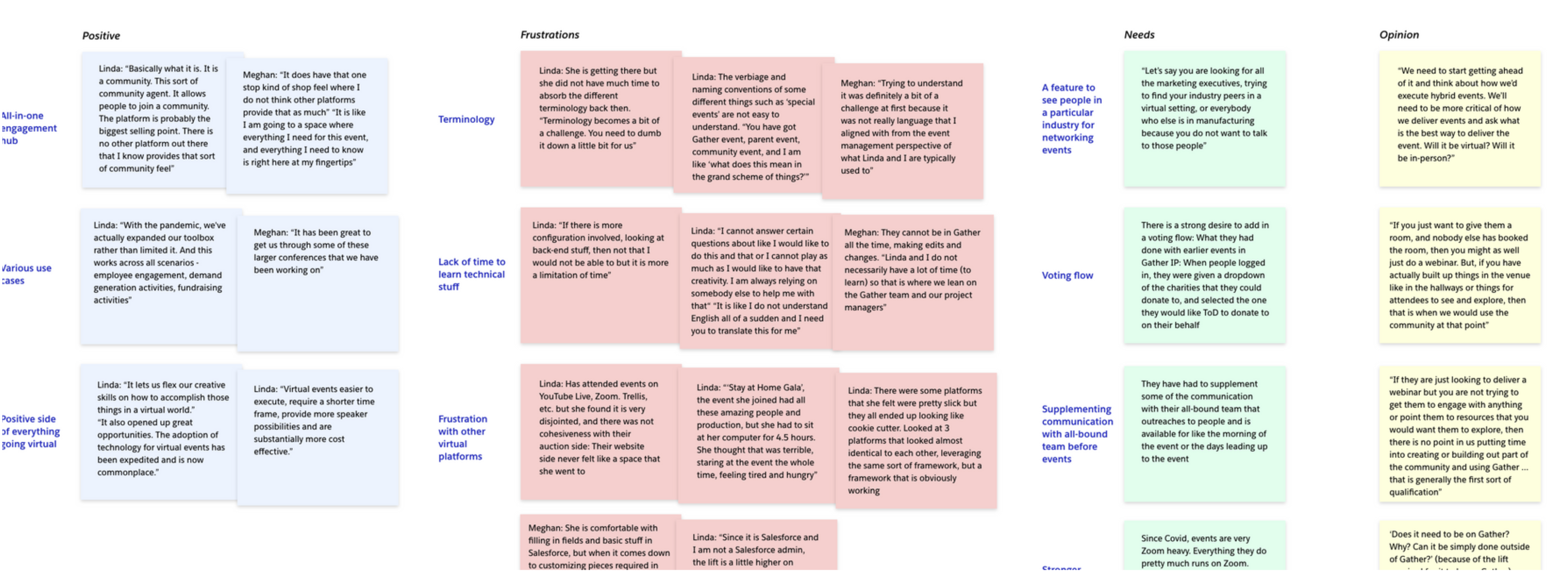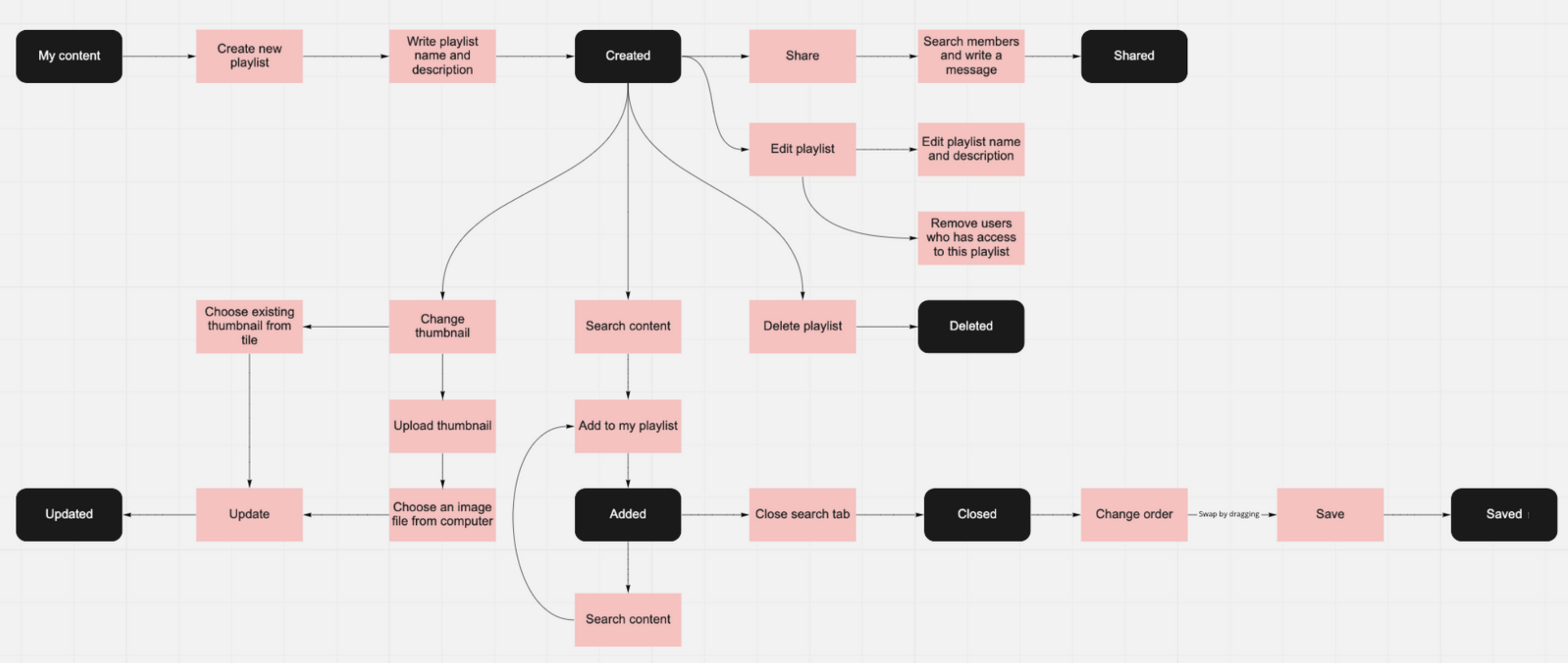

Traction Gather is a Salesforce-based product at Traction Rec that allows businesses to host video and live events within their branded digital communities. As demand grew for scalable, personalized content experiences, we noticed increased requests for a feature to group and promote content more effectively.
1 PM, 1 PO, 2 engineers, 1 data analyst, 1 QA
Although the playlist feature had been discussed internally, no formal research had been done. User needs weren’t well defined, and there were conflicting assumptions about what functionality users expected. My challenge was to align teams on real user expectations, discover how playlists might improve engagement, and explore what admin-level functionality was truly necessary.

As it was the company’s very first user research, I wanted to make sure I echoed the team's expectations clearly and heard any additional questions and asumptions the team might have. I facillitated workshops and had the team brainstorm questions, vote for the the most impactful topics for more discussion and alignment.
I conducted interviews with both admin and end-users to ground the feature in real user behavior, and also understand general sentiment and user's workflows and pain points.


I synthesized interview insights into behavioral patterns. Aside from general insights, key takeaways that directly shaped the functional and UI requirements include:
The business needed a robust user persona to support user-centered decision making across product teams. Based on the synthesis from user interviews, I crafted a persona to align internal understanding.

The feature had to support different user needs on both end-user and CMS platforms, integrated into each interface seamlessly. I mapped user flows and established interaction patterns that addressed unique needs for admin permissions and user personalization.


Before diving into design, I conducted a competitor (non-direct) audit to see how others handled playlists. This helped identify visual conventions users are already familiar with, which informed decisions around layout clarity, interaction expectations, and UI responsiveness for both end-users and admins.

Using the insights from UI research, I began low-fidelity sketching to quickly explore layout possibilities and structural patterns for the playlist feature.
Since Traction Gather is built on Salesforce, this project required close collaboration with engineers to create a custom playlist component and extend functionality within the native CMS. I took time to understand Salesforce’s limitations and worked with the team to design a solution that balanced platform constraints with user needs.


Following the soft launch of the playlist feature to a small group of internal users and select clients, we tracked metrics to evaluate adoption and engagement. Here's what we observed over a month:
These early signals validated our hypothesis that playlists would improve content discoverability and user retention.
The playlist feature tackled deeper system-level design challenges—aligning with content structures and adapting to varied user needs.
It reflects my ability to approach design holistically, collaborate cross-functionally, and lead projects successfully.
This project began with unclear goals and scattered assumptions. Leading early research and team workshops helped surface real user needs and align stakeholders.
Facilitation and discovery are just as critical as pixels especially when laying the groundwork for impactful design.